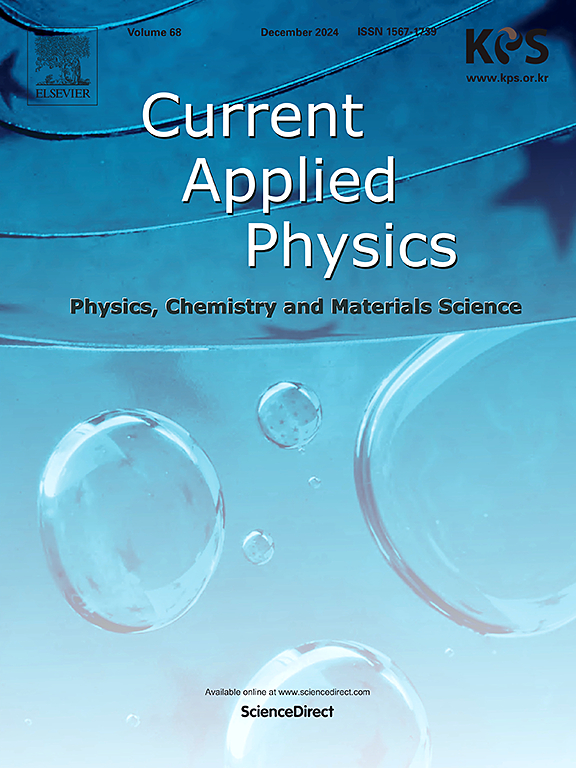Synthesis of Cu2O/ZnO fiber heterojunction networks for self-powered visible-light photodetectors with rapid response
IF 3.1
4区 物理与天体物理
Q3 MATERIALS SCIENCE, MULTIDISCIPLINARY
引用次数: 0
Abstract
The network-based self-powered photodetector features a large interfacial area, enhancing light absorption and charge carrier generation, along with its mechanical robustness, enabling integration into various applications. In this study, we propose a novel self-powered photodetector based on an AZO/ZnO/Cu2O/Ag network architecture, fabricated using electrodeposition and atomic layer deposition techniques. The fabricated photodetector exhibits a detection wavelength range extending from 390 nm to 780 nm at zero bias, covering the visible spectrum. With a maximum responsivity of 1.6 mA/W and a response time of 5 μs, the device showcases excellent sensitivity and rapid detection capabilities. X-ray photoelectron spectroscopy (XPS), scanning electron microscopy (SEM), X-ray diffraction (XRD), and optoelectronic performance testing were employed to analyze the operating mechanism of the photodetector. It was found that the spatial charge region formed at the interface between Cu2O and ZnO layers plays a crucial role in enabling the self-powered operation of the photodetector. Our work provides a new strategy for the development of high-performance network photodetectors.

快速响应自供电可见光探测器用Cu2O/ZnO光纤异质结网络的合成
基于网络的自供电光电探测器具有较大的界面面积,增强了光吸收和电荷载流子的产生,以及其机械稳健性,可以集成到各种应用中。在这项研究中,我们提出了一种基于AZO/ZnO/Cu2O/Ag网络结构的新型自供电光电探测器,采用电沉积和原子层沉积技术制备。在零偏压下,光电探测器的探测波长范围从390 nm扩展到780 nm,覆盖了可见光谱。该器件的最大响应率为1.6 mA/W,响应时间为5 μs,具有出色的灵敏度和快速检测能力。采用x射线光电子能谱(XPS)、扫描电镜(SEM)、x射线衍射(XRD)、光电性能测试等方法分析了光电探测器的工作机理。研究发现,在Cu2O和ZnO层之间的界面处形成的空间电荷区对光电探测器的自供电工作起着至关重要的作用。我们的工作为高性能网络光电探测器的开发提供了一种新的策略。
本文章由计算机程序翻译,如有差异,请以英文原文为准。
求助全文
约1分钟内获得全文
求助全文
来源期刊

Current Applied Physics
物理-材料科学:综合
CiteScore
4.80
自引率
0.00%
发文量
213
审稿时长
33 days
期刊介绍:
Current Applied Physics (Curr. Appl. Phys.) is a monthly published international journal covering all the fields of applied science investigating the physics of the advanced materials for future applications.
Other areas covered: Experimental and theoretical aspects of advanced materials and devices dealing with synthesis or structural chemistry, physical and electronic properties, photonics, engineering applications, and uniquely pertinent measurement or analytical techniques.
Current Applied Physics, published since 2001, covers physics, chemistry and materials science, including bio-materials, with their engineering aspects. It is a truly interdisciplinary journal opening a forum for scientists of all related fields, a unique point of the journal discriminating it from other worldwide and/or Pacific Rim applied physics journals.
Regular research papers, letters and review articles with contents meeting the scope of the journal will be considered for publication after peer review.
The Journal is owned by the Korean Physical Society.
 求助内容:
求助内容: 应助结果提醒方式:
应助结果提醒方式:


